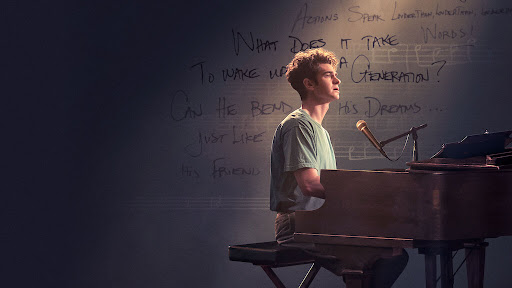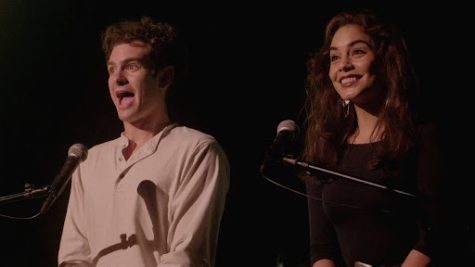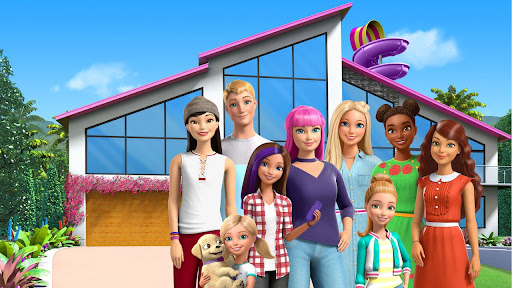The Genius Framework Behind tick, tick… BOOM!

Andrew Garfield portrays Jonathan Larson in “Tick…Tick… BOOM!”
A few months ago, tick, tick… BOOM! the movie came out on Netflix. Jonathan Larson’s tick, tick… BOOM! first debuted in the 90s as a two-person autobiographical musical made up of monologues and duets between a couple, Jonathan and Susan. However, director Lin Manuel Miranda reframed the story in the context of Jonathan’s actual life with bits and pieces of monologues and music sprinkled throughout the narrative, and it completely revived the musical.
This genius framework enhances everything heartbreaking about a couple of rock songs and funny monologues. It adds character development and depth that the stage adaptation alone wouldn’t have been able to bring. Here’s what I mean:
When you use songs in a new context, it can completely revamp their meaning and add new depth to an originally surface-level song. ‘Boho Days‘ has a lyric that goes: “Time is flying and everything is dying, I thought by now I’d have a dog, a kid, and wife.” This song is pretty playful and upbeat: him describing things around his run-down apartment, but then he mentions this serious topic off the cuff. It sort of seems like he’s laughing through the pain of getting older.
Now, in the film, it’s an impromptu song that Jonathan sings to try to revive a dying party, singing this line to his girlfriend, Susan. There is so much character-building going on! He’s just saying whatever comes to mind, and suddenly he’s blurting out some major relationship expectations in front of a whole party. This reveals some underlying problems in their relationship, adding depth to an upbeat tune.

I also love how Miranda used the song ‘Therapy.’ On the surface level, it is a sarcastic argument between a couple and no more, but add interwoven dialogue and suddenly it’s the saddest thing.
The lyrics go: “I was afraid that you’d be afraid if I told you that I was afraid of intimacy” with a super happy melody, and a second later you cut to Susan yelling at Jonathan, “I’ve been telling you how unhappy I am for months!” I really encourage you to watch the clip… it’s hard to explain how a song so chipper can make a scene somehow more devastating.
And then there’s Come to Your Senses, a song Larson wrote for his musical, Superbia. He says, “I close my eyes, I brace myself, I don’t dare take a breath but when I open them, I don’t see Karessa there…” And then it pans to Susan singing to him on the rooftop, where they used to look out onto the city. The song captures the jarring disconnect between the success of the workshop and the disaster of his personal life. You can see precisely the moment Jonathan realizes his workshop isn’t the most important thing in his life: the second he opens his eyes. I love the way it cuts from Susan to Karessa to the audience to Jonathan opening his eyes– so good.
This is where it gets confusing. The audience has seen clips of this performance throughout the film, but it is revealed only at the end that it is tick, tick… BOOM and not Superbia on Broadway. I find this so impactful because suddenly every song in the movie can be simultaneously reflecting in hindsight perspective and actively portraying the situation, which is so special. This is the kind of movie that you can watch multiple times and there is always something new to pay attention to.
This movie is so special, and I do not think I would have fallen in love with it if it were simply a two-person movie with a rock score and some funny monologues like Larson initially intended. But that’s the thing about art: it can change forms and connect with a wider audience, relate to more people. And because this movie reached a wider audience, Jonathan Larson’s memory will live on in more hearts.
by Elyza Tuan ’23, Editor-in-Chief
23etuan@montroseschool.org








